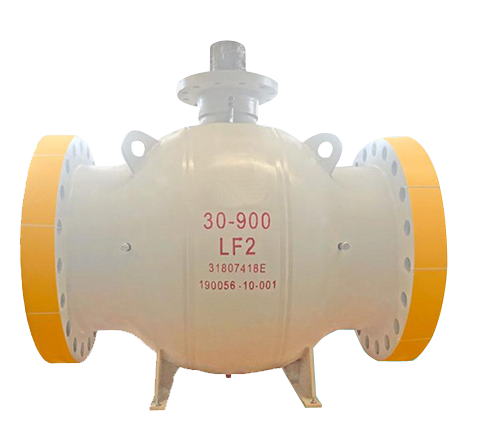Ball valves are widely used in various industrial sectors due to their simple structure, excellent sealing performance, and ease of operation. However, during long-term use, ball valves may develop leaks. Leaks not only lead to the waste of media but can also disrupt the normal operation of the system and even pose safety risks.

Common Reasons
1. Aging or Damage of Sealing Materials
The sealing performance of a ball valve primarily relies on the tight fit between the valve seat and the ball. These sealing components are typically made from materials such as rubber or polytetrafluoroethylene (PTFE). Over long-term use, the sealing materials may experience aging, deformation, or damage due to medium corrosion, high-temperature and high-pressure environments, or friction, leading to leaks. This issue is particularly common in applications involving high temperatures and highly corrosive media.
2. Wear of the Ball or Seat
The core components of a ball valve are the ball and the seat, which continuously contact and rub against each other during opening and closing. If the medium contains solid particles, or if the ball valve operates for an extended period in high-pressure, high-flow environments, wear can occur on the surfaces of the ball and seat. Worn surfaces struggle to form a tight seal with the sealing components, leading to inadequate sealing and resulting leaks.
3. Seal Failure of the Stem
The operation of a ball valve is facilitated by the stem, which connects to the valve body through the packing gland, providing a sealing function. Due to frequent operation, aging of the packing, or improper installation, the packing gland may experience seal failure, allowing the medium to leak along the stem. This type of leak is classified as external leakage, which can lead to environmental pollution and energy waste.
4. Improper Installation
If a ball valve is not correctly installed or tightened at the flange or threaded connections, gaps may occur, leading to leaks. Additionally, if factors such as thermal expansion and vibration of the pipeline are not considered during installation, the ball valve may experience stress during operation, resulting in leakage at the interface between the valve body and the pipeline.
5. Medium Factors
Certain special media, such as high-temperature, high-pressure fluids, highly corrosive substances, or fluids containing suspended particles, can accelerate the wear and corrosion of ball valves, leading to leaks. For example, acidic media can hasten the corrosion of metal components, while particulate matter may cause wear on the seat and ball, both of which can diminish the sealing performance of the ball valve, ultimately resulting in leakage issues.
How to Prevent and Handle
1. Choose Appropriate Sealing Materials
Selecting the right sealing materials for different operating conditions is crucial. For example, in high-temperature environments, high-temperature resistant sealing materials should be chosen, while chemical-resistant seals are necessary for highly corrosive media. Regular inspection and replacement of seals can also effectively prevent leaks caused by aging or wear.
2. Regular Maintenance and Care
Routine maintenance and regular servicing of ball valves help extend their lifespan and reduce the risk of leaks. The wear of the ball and seat should be regularly checked, and impurities and particles in the medium should be promptly removed to prevent further wear. Additionally, the packing should be inspected to ensure good sealing, and aging packing should be replaced in a timely manner.
3. Proper Installation and Operation
Installation should strictly adhere to the technical specifications of the ball valve, ensuring that flange or threaded connections are tight to avoid leaks caused by thermal expansion, vibration, or stress. Additionally, during operation, frequent opening and closing should be avoided, especially under high-pressure conditions, to reduce wear on the valve.
4. Special Treatment for Media
For applications involving fluids with suspended particles or strong corrosive properties, it is advisable to install a filter upstream of the ball valve to reduce solid particle damage to the valve. Additionally, choosing ball valves made from corrosion-resistant materials can effectively slow down the corrosion process and lower the risk of leakage.